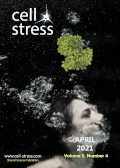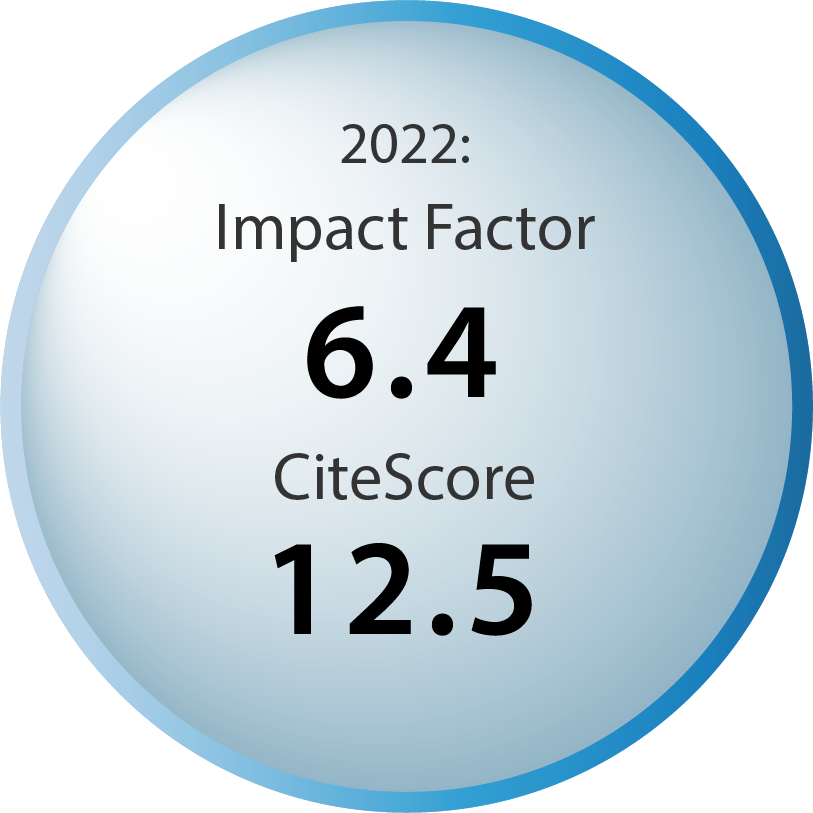Table of contents
Volume 5, Issue 4, pp. 40 - 54, April 2021
Cover: This month in
Cell Stress: PI3K-gamma in respiratory disease. Structure image from the RCSB PDB (rcsb.org) of PDB ID 5JHB (J.E. Burke, A.J. Inglis, R.L. Williams (2017) Deconvolution of Buparlisib's mechanism of action defines specific PI3K and tubulin inhibitors for therapeutic intervention. Nat Commun 8: 14683-14683). Backdrop image credit:
Engin Akyurt via Pexels. Images modified by
Cell Stress. The cover is published under the
CC BY 4.0 license.
Enlarge issue cover
Roles of phosphatidyl inositol 3 kinase gamma (PI3Kγ) in respiratory diseases
Valentina Sala, Angela Della Sala, Alessandra Ghigo and Emilio Hirsch
Reviews |
page 40-51 | 10.15698/cst2021.04.246 | Full text | PDF |
Abstract
Phosphatidyl inositol 3 kinase gamma (PI3Kγ) is expressed in all the cell types that are involved in airway inflammation and disease, including not only leukocytes, but also structural cells, where it is expressed at very low levels under physiological conditions, while is significantly upregulated after stress. In the airways, PI3Kγ behaves as a trigger or a controller, depending on the pathological context. In this review, the contribution of PI3Kγ in a plethora of respiratory diseases, spanning from acute lung injury, pulmonary fibrosis, asthma, cystic fibrosis and response to both bacterial and viral pathogens, will be commented.
Inhibitory DAMPs in immunogenic cell death and its clinical implications
Kazukuni Hayashi, Fotis Nikolos and Keith S. Chan
Microreviews |
page 52-54 | 10.15698/cst2021.04.247 | Full text | PDF |
Abstract
Dying (or dead) cells are increasingly recognized to impose significant biological influence within their tissues of residence—exerting paracrine effects through proteins and metabolites that are expressed or secreted during cellular demise. For example, certain molecules function as potent mitogens, promoting the repopulation of neighboring epithelial cells. And other myriad of factors—classified as damage-associated molecular patterns (DAMPs)—function as “find me” (attractant), “eat me” (engulfment), or “danger” (activation) signals for recruiting and activating effector immune cells (e.g., dendritic cells) to initiate inflammation. Since the discovery of immunogenic cell death (ICD), the current dogma posits DAMPs as immunological adjuvants for innate immune cell mobilization and activation, which ultimately leads to the antitumoral cross-priming of CD8+ T cells. However, what is currently unknown is how these immunostimulatory DAMPs are counteracted to avoid immune-overactivation. Our recent work builds on these fundamentals and introduces prostaglandin E2 (PGE2) as an ‘inhibitory’ DAMP—a new variable to the ICD equation. Prostaglandin E2 functions as an immunosuppressive counterpoise of adjuvant DAMPs; and thus, mechanistically precludes ICD. Furthermore, the long-debated immunogenicity of gemcitabine chemotherapy was revealed to be contingent on inhibitory DAMP blockade and not due to its inability to promote DAMP expression (i.e., calreticulin) as previously reported. These findings were intriguing. First, despite the presence of gemcitabine-induced hallmark DAMPs, the inhibitory DAMP (i.e., PGE2) was sufficient to hinder the ICD-induced antitumoral immune response (Fig. 1a). And second, rather than pharmacologically substantiating immunostimulatory DAMPs as conventionally approached, the mitigation of the inhibitory DAMP—tipping the immunostimulatory and inhibitory DAMP balance in favor of immunostimulatory DAMPs—was sufficient to render the cell death immunogenic and converted gemcitabine into an ICD-inducing therapy (Fig. 1b). In this microreview, we extrapolate our findings and implicate the value of inhibitory DAMP(s) in drug discovery, its use for clinical prognosis, and as target(s) for therapeutic intervention.



